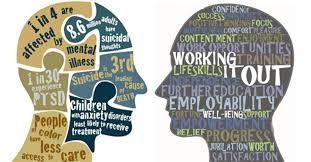The Truth about Mental Health

Mental Health. The truth is: it’s the worst it has been for teens in years. Not necessarily the most friendly dinner table topic, talk about mental health has reached the point where it can no longer be ignored. Mental health is defined as a person’s condition with regard to their psychological and emotional well-being. This can also be termed as mental illness, emotional health, psychological well-being and many others.
Mental illness, being the most common synonym, refers to cases such as anxiety, eating disorders, depression, etc. It has been found that half of all cases start at the age of 14 and most are either undiagnosed or untreated. Additionally, the CDC reports 1 in 5 teens (aged 12 to 18) suffer from at least one mental health disorder. Likewise, 1 in 3 adolescents meet the criteria of an anxiety disorder by the age of 18. It has also recently been established that suicide has made its way to one of the top causes of teenage death in the past few years.
Since mental health is in the brain, it is hard to know when someone is actually being affected by a mental illness. There is no real way to know unless they open up and talk to you about it. As easy as talking to someone sounds, it’s a big thing for the person with the mental illness. To talk to your friends is a solution, but in today’s society where your news is spread like wildfire, people aren’t going to open up to their friends. Additionally, it is hard for a friend to understand what you’re going through, especially if they do not or have not had a mental health disability. Talking to teachers and school counselors is an option\; however, it may be hard opening up to them because they know anyone you may talk about and paranoia sets in.
There are many articles out there about how to help someone with a mental illness or how to help yourself. The main takeaway from those articles does not come in the form of “eating right” or “getting sleep” or “trying to pay attention.” Those will get better once they mentally get better. Instead, as a start, to help someone is to create a safe space with them. Let them know that they are not alone and they can talk about what they need to. This can come from a friend, parent, counselor or therapist.
Even though there is no set ways to help someone with a mental illness, the topic should not go untalked about. If we do not make a conscious effort to help our fellow peers, the problem can get worse. So instead of just walking around trying to get to your destination, say hello to someone you don’t normally talk to or strike up a conversation, the results may be surprising.

Calli is a 3 year member of the Crimsonian Staff. She is a part of National Honors Society, Key Club, Science Olympiad and Thespians.





